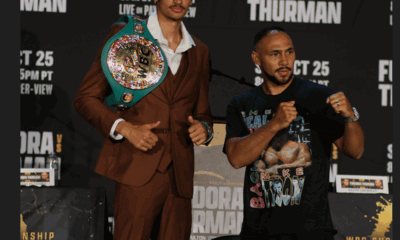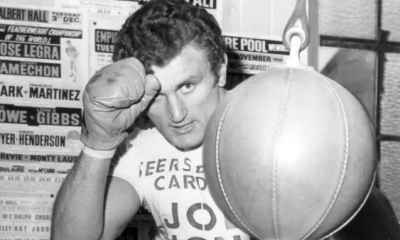Featured Articles
Clay Moyle Talks About His Obsession with Boxing Books (with Tips for Collectors)
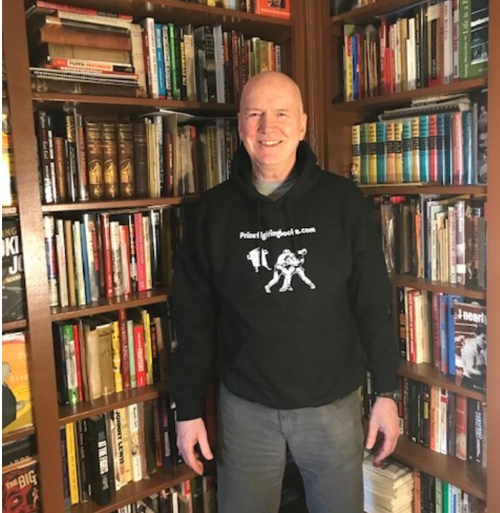
How many boxing books does one really need to own? I don’t know, but I’m sure that I blew by whatever that number is a long time ago. I’m just as sure, that I know a number of fellows who’d probably answer that one can never really have too many boxing books. You see, there are an awful lot of oddballs among serious collectors, but that’s a topic for another article.
Not long after going to a boxing gym for a year in my early 30’s, I got the idea to try and acquire a biography about every world heavyweight champion since the time of John L. Sullivan. That was the spark that lit a fire that quickly raged out of control.
How so? Well, to begin with, during that initial pursuit, I began to come across other boxing books that I thought might be interesting, so I opted to purchase many of those as well. One thing led to another, and it wasn’t all that long before my new objective somehow became to add every boxing book ever written in the English language to my personal collection.
Now that’s obviously a never-ending quest as there are seemingly many that are next to impossible to find, and of course new boxing books are being written all the time. In hindsight, I’ve often thought it would have been much more sensible to target a smaller niche for myself. For example, maybe just a specific era, only non-fiction, anything saner.
I probably purchased around 300 books during the first year of my new sickness. It was about that time, that I made the acquaintance of a serious boxing book collector in Denmark named Niels Thorsen. Niels had a collection of 1,500 boxing titles at the time. I remember wondering how on earth one individual could amass a collection of that many boxing books.
But yet, here I am 30+ years later, with a personal collection of over 4,600 boxing-related books, and an understanding of how it can come about.
To begin with, I think one has to have a few loose screws and a tendency to become completely obsessed with accomplishing a goal once they’ve set their mind to it. Anybody who knows me well, would probably suggest that I fit that description pretty well.
It also takes an awful lot of time, effort and persistence to build a collection this large. When I reflect upon my own journey, I can recall a great number of things that I did along the way that I believe were key to my efforts to build a collection this large, including each of the following:
Visiting Used Bookstores
As long as I can remember, I’ve loved visiting used bookstores. There’s just something about searching bookshelves for treasure, the thrill of coming across a book of interest, holding it in your hands and getting the opportunity to flip through the pages.
This is a primary way that serious book collectors built their collections in the past. Those whose professions required them to travel, had the additional benefit of being able to take advantage of the opportunity to visit bookstores in those cities and I’ve met a number of parties who did that for years. Leaving a business card behind when you leave with your interests written on the back can sometimes prove fruitful as well.
I’ve frequented used bookstores for years, and continue to do, though I no longer expect to find as many desired books that way for reasons that will become apparent shortly.
Writing or Phoning Bookstores
In addition to visiting bookstores in other cities while traveling, I often used to phone those I couldn’t get to personally, while killing time in an airport or during spare time in my hotel room. This proved beneficial on many occasions, and sometimes provided me with some useful leads.
I know others who regularly wrote to bookstores to inquire about available books in their field of interest.
The Internet
The arrival of the internet created opportunities for serious collectors that just didn’t exist previously. Once the internet arrived, and a proliferation of websites began to crop up, it didn’t take me long to learn of a site named AbeBooks. AbeBooks is derived from their original name “Advanced Book Exchange.” They were founded in 1995 and launched their website in 1996 when their listings only included the inventory of four bookstores.
That changed very quickly as booksellers all over the world learned that they could make their inventory of books available to customers worldwide on-line. Today, the site is described as an e-commerce global online marketplace that specializes in rare and out-of-print books and they became a subsidiary of Amazon in 2008.
With the advent of used book sites like AbeBooks, many longtime used bookstores began disappearing. Sellers realized they could reach a much, much wider audience selling their books exclusively on-line, and there was no need to bear the expense of a traditional brick and mortar store presence when there were much cheaper ways to store their inventories.
Sites like AbeBooks are both an incredible resource and a curse for the serious collector. They’re an unbelievable resource from the standpoint that one can now so easily search the inventories of bookstores all over the world. And a curse, because it’s become so much easier to find treasure to spend your money on.
I don’t believe it’s an exaggeration to say that there was a time when I routinely searched the AbeBooks site for new inventory listings as many as 30-40 times per day.
Personal Website
I don’t remember when I began selling boxing books as well, but at some point, I pretty quickly realized that I could partially help fund my book purchasing addiction with the profits realized from buying and reselling duplicate boxing books. As I became more knowledgeable concerning the values of specific titles, I began routinely coming across a number that I knew I could quickly flip for a profit.
Acquiring duplicate books, as well as other boxing memorabilia, ultimately led to the creation of my own website (www.prizefightingbooks.com) from which I list and sell my own inventory of duplicate boxing books and other boxing memorabilia that I have available.
Or course, that inventory has also become much larger than originally planned and there are now over 2,500 boxing books listed for sale on the site as well as many magazines, programs, autographs, artwork, etc.
An unexpected benefit of creating the website is that it led to many parties contacting me with specific books, or entire collections, of boxing books that they wished to sell.
Purchasing Collections
Purchasing another party’s collection can be a pricey proposition. But it’s a quick way to acquire a large number of books to add to and upgrade your collection. It can also prove to be a relatively inexpensive way to build your collection if you can resell the duplicates, especially if a number of those duplicate books are rare and/or scarce titles. The fact that purchasing a collection often results in acquiring a number of common titles as well is one reason I have so many copies of specific titles on my website.
Many times, the purchase of a collection has enabled me to add many rare titles at a very reasonable price as a result of profits that I was able to realize from the sale of the duplicate titles. Of course, you’re liable to end up with a lot of unsold duplicates as well.
The purchase of collections, and a willingness to take on the work of reselling the duplicates, has been one key to my success in building a collection of this size.
Auction Sites
I acquired a number of books on eBay over the years. Some for very good prices, others pretty steep depending upon the rarity. While I didn’t usually find it the most economical way to purchase books I desired, I also occasionally purchased a few from sites like the Leland and Heritage Auction sites. There are many others that one can search.
Simply Making Folks Aware of Your Interests and Plain Old Good Luck
Sometimes simply making individuals aware of your interests can really pay off. Roughly eight years ago, I came across a used book store listing of a $25 signed softcover book by The Ring magazine founder and longtime editor Nat Fleischer and purchased it for resale. When I paid for the book, I added a comment to let the seller know that I’d be interested to learn of anything else he might acquire of that nature. Well, in this particular case that paid off more than I could have possibly imagined.
The seller replied and let me know they’d just acquired a large number of books, manuscripts and personal files that had belonged to Nat Fleischer. They had been kept in storage for decades by the decedents of Fleischer’s son-in-law Nat Loubet and he hadn’t had a chance to inventory it all yet. In fact, the book that I’d purchased from him was the first thing he’d listed.
I immediately let him know that I was interested in the possibility of purchasing what he’d acquired and eagerly awaited a list of offerings and prices.
As it turned out, there was an awful lot more treasure than I expected. But when the seller provided an asking price for the entire lot, I couldn’t say “Yes” fast enough.
So, I fired off a check and within a couple weeks a number of large boxes arrived in the mail. It took weeks for me to properly inventory everything but I loved every minute of it.
The purchase included many boxing books that were written by Fleischer, many of which he’d inscribed to his son-in-law as being the first off the press.
But my biggest thrill was when I discovered that what I’d purchased included a number of complete unpublished manuscripts by Fleischer. For example, where was a large 268,000 words bound four-volume works titled ‘The History of Prizefighting in Literature.’ I later discovered this monster was never published because it was considered too large by the various publishing house’s he shared it with at the time. In fact, the collection included a letter from one publisher turning it down for that specific reason.
Self-publishing a work wasn’t really the option then that it is today, so despite the fact that Nat wrote and published so many boxing books, this particular title and a number of other manuscripts of his were never published.
There were two other huge unpublished works titled ‘The History of Prizefighting in New York’ and ‘The History of Prizefighting in Chicago.’
There were also many other exciting unpublished works written about fighters such as Tom Sharkey, Dan Donnelly, and others, as well as original manuscripts for many of his published boxing books, typewritten pieces that had been used in The Ring, and of course a lot of personal correspondence between he and various parties.
Ultimately, I kept the books, and sold a good chunk of it, including personal files, correspondence and some of the unpublished manuscripts to a university that I knew would take good care of it.
At the time, the bookseller told me that he hadn’t acquired everything in the collection, but he’d acquired everything they were willing to part with at that time. So, I held out hope that he’d one day purchase more and I’d hear from him again.
Sure enough, he eventually phoned me again and let me know that he’d purchased three more large boxes and asked if I’d be interested in those as well.
We quickly agreed upon a price and I received more unpublished manuscripts, scrapbooks, letters, and photos.
It was only later, that I came across an August 1962 Sports Illustrated article about Fleischer and read about the unpublished manuscripts that were sitting in his safe in his Madison Square Garden office at that time, and realized that it had all somehow found their way into my own home a half century later!
So, you just never know what might come about from taking the extra step to make people aware of your collecting interests and what you might be willing to purchase.
Treasured Books
Sometimes I’m asked which of my books I value the most. While I have many rare old titles from the 18th and 19th centuries that are worth more money, the books that I personally treasure the most are those that are signed or inscribed to other parties of note. Many of those are among my personal favorites. A dozen of them would include the following:
- ‘The Roosevelt That I Know. And Recollections of the Most Famous American Fighting Man’ by American Middleweight Champion, Mike Donovan. 1909. This book is a terrific read as it contains insights concerning many of the greats that Donovan knew including the likes of John L. Sullivan, Theodore Roosevelt, Jack Dempsey and many others. For many years, I assumed it was issued without a dust jacket, but one day I discovered it with a very good dust jacket. It’s still the only time I’ve come across it with a jacket. Furthermore, it’s inscribed by Donovan in 1909 to his friend William Pinkerton.
- ‘The Golden People’ by Paul Gallico. 1965. Profiles of numerous legends of sport. This one has a signed bookplate of Bing Crosby and is also signed to him by both Jack Dempsey and Gene Tunney.
- ‘Champions Off Guard’ by William O. Inglis. 1932. Terrific read with a beautiful dust jacket. The author not only personally knew many of the early legendary world heavyweight champions such as John L., Jim Corbett, Bob Fitzsimmons, Jack Dempsey, and Gene Tunney, and provides interesting insights about them, but he sparred with a number of them and details those experiences. One of my favorite reads, my copy is also inscribed to the famous early promoter James W. Coffroth.
- ‘Battling Nelson. Lightweight Champion of The World’ by Battling Nelson. 1909. The autobiography of the great champion. This one is also inscribed “With best wishes from one champion to another. To James J. Jeffries, Heavyweight champion, From Battling Nelson, Lightweight champion Los Angles, Cal. July 12, 1909.”
- ‘My Life and Battles’ by James J. Jeffries. 1910. Fairly scarce title, this one is inscribed by the famous sportswriter cartoonist Bob Edgren on July 4, 1910, the date of the Johnson-Jeffries title fight.
- ‘The Tumult and The Shouting’ by Grantland Rice. 1954. Signed by Gene Tunney, Jack Dempsey, Doc Blanchard, Gene Sarazan, Toots Shor, Johnny Weismuller and others.
- ‘Relief to Royalty. The Story of James J. Braddock’ by Lud. 1936. Inscribed by Braddock to promoter Mike Jacobs.
- ‘Two Fisted Jeff’ (James J. Jeffries) by Hugh Fullerton. 1929. Signed by Jeffries
- ‘Physical Culture and Self Defence’ by Bob Fitzsimmons. 1901. Inscribed by Fitzsimmons.
- ‘Jack Johnson the Man with Boxing Instructions and Health Hints’ 1932. Signed by Johnson
- ‘The Prize Ring’ by Bohun Lynch. 1925. Long inscription from former light heavyweight champion Tommy Loughran.
- ‘God, Gloves and Glory. An Autobiography’ 1956 by Henry Armstrong. This book by the first man to simultaneously hold three world titles isn’t particularly scarce. But what makes this one unique is the long inscription “To the Greatest, Ray Robinson.”
-

 Book Review4 weeks ago
Book Review4 weeks agoMark Kriegel’s New Book About Mike Tyson is a Must-Read
-

 Featured Articles3 weeks ago
Featured Articles3 weeks agoThe Hauser Report: Debunking Two Myths and Other Notes
-

 Featured Articles3 weeks ago
Featured Articles3 weeks agoMoses Itauma Continues his Rapid Rise; Steamrolls Dillian Whyte in Riyadh
-
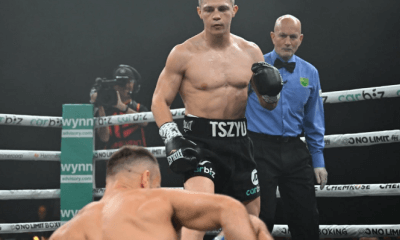
 Featured Articles3 weeks ago
Featured Articles3 weeks agoNikita Tszyu and Australia’s Short-Lived Boxing Renaissance
-
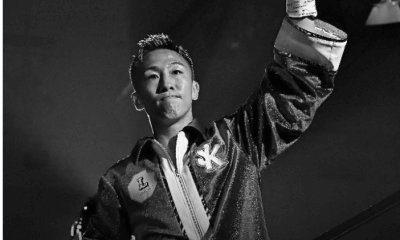
 Featured Articles4 weeks ago
Featured Articles4 weeks agoKotari and Urakawa – Two Fatalities on the Same Card in Japan: Boxing’s Darkest Day
-
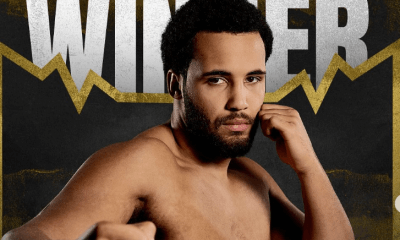
 Featured Articles3 weeks ago
Featured Articles3 weeks agoIs Moses Itauma the Next Mike Tyson?
-

 Featured Articles2 weeks ago
Featured Articles2 weeks agoBoxing Odds and Ends: Paul vs ‘Tank,’ Big Trouble for Marselles Brown and More
-

 Featured Articles3 weeks ago
Featured Articles3 weeks agoAvila Perspective, Chap. 340: MVP in Orlando This Weekend


